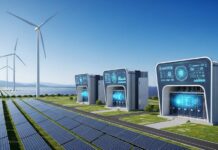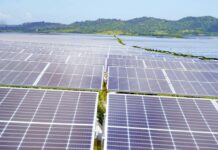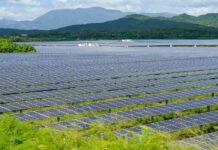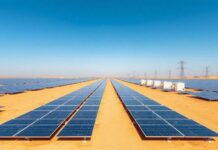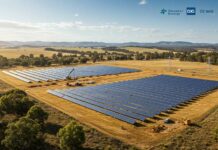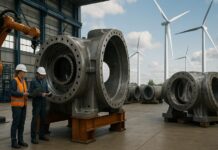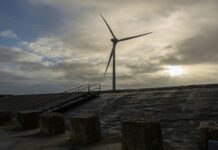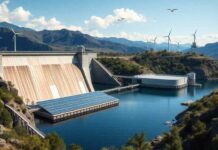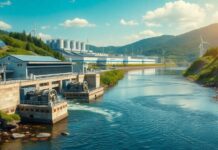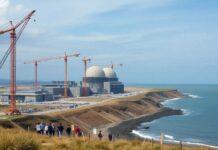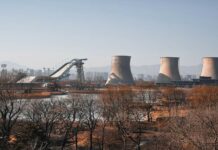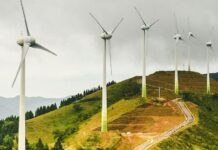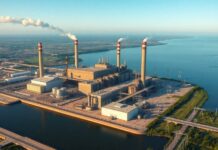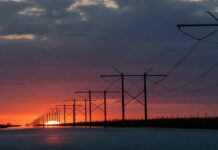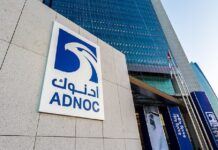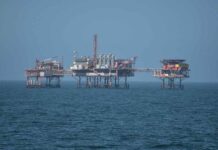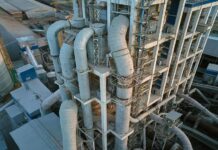The $520m natural gas-fired cogeneration facility burns high- and low-pressure natural gas as well as landfill gas. Located in Thorold, Ontario, Canada, the facility is next to the Abitibi-Consolidated Company of Canada (ACCC) paper mill, and located on land owned by ACCC. The plant supplies electricity to the grid, and electricity and steam to the paper mill for its newsprint manufacturing process.
The project was awarded a 20-year CHP (combined heat and power) Contract by the Ontario Power Authority to supply an average of 236MW to the Ontario power system. The power generated by the plant is enough to power about 100,000 homes in Ontario. One of the largest cogeneration plants in Ontario, the Thorold facility provides competitively-priced power and steam, helping to reduce the province’s reliance on coal-fired generation.
Thorold Cogeneration Project development
“Tresman Steel has provided about 500t of structural steel and mixed metals for the project.”
The project’s initial development began in 1997. It was bid by Thorold CoGen as developer, a wholly-owned subsidiary of Northland Power (which develops, owns and operates thermal, wind, and hydro power plants across Canada).
The bid was accepted in October 2006. An engineering, procurement and construction contract was signed with VK Mason Construction (a subsidiary of Kiewit Construction of Omaha, Nebraska). Site preparation began in July 2007 and full construction started in September 2007.
Tresman Steel has provided about 500t of structural steel and mixed metals for the project. Enbridge has undertaken the landfill gas interconnection and the routing of the high-pressure gas line. In June 2008, Aquatech International was awarded a contract to build an industrial water treatment facility.
Project finance
Completion of the $520m financing was announced in August, 2007. This mostly came from a combination of $415m of long-term senior debt provided by the Bank of Montreal, the Manufacturer’s Life Insurance Company, and Sun Life Assurance Company. In addition, $70m of subordinated debt was provided by Northland Power Income Fund, Manulife and Sun Life, and equity from Northland Power.
Turbines
Major equipment consists of a 170MW GE 7FA gas turbine generator (GTG), a heat recovery steam generator with duct firing capability, and a 95MW extraction / condensing steam turbine generator (STG). There will also be a 9MW back-pressure steam turbine generator, and two auxiliary boilers capable of burning natural and landfill gas. The back-pressure steam turbine generator will generate additional electricity, while the auxiliary boilers will provide up to 350,000lb/h of steam for Abitibi’s manufacturing process.
The 7FA gas turbine has low nitrogen oxide and carbon monoxide emissions. It offers flexibility in cycle configuration, fuel selection and site adaptation. All F class gas turbines include an 18-stage axial compressor and a three-stage turbine, and feature a cold-end drive and axial exhaust, which improves combined cycle performance to reach net efficiencies over 58%.
“Major equipment includes a 170MW GE 7FA gas turbine generator.”
GE’s DLN 2.6 (Dry Low NOx) combustor produces less than 9ppm NOx and CO, so minimising the need for exhaust clean-up systems. GE has continued to make incremental design enhancements that improve turbine output, efficiency, reliability and availability.
Power augmentation equipment provides additional gas turbine performance during summer peak demand periods. These power augmentation techniques include inlet cooling, steam injection and peak firing.
The high efficiency of the plant will enable Abitibi-Consolidated to replace its steam boilers. That will reduce the mill’s production costs, enhance its competitiveness in the market, and help reduce airborne emissions. The auxiliary boilers will also be equipped with low-NOx combustors for emissions control.
Grid network
Step-up transformers (13.8 / 230kV) are connected to a new overhead, 400m 230kV transmission line. The new line is connected to the existing 230kV line, which supplies power to the mill. The cogeneration facility produces electricity behind the meter, reducing the dependence of the facility on the municipal electrical supply.


